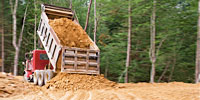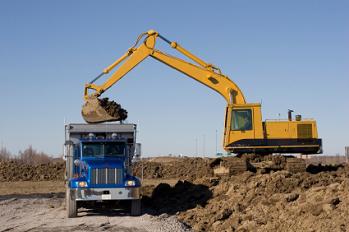
|
Construction Fill Volume Conversions
“No matter what density any erratic lab compaction test might indicate, the SSCE® generated by the site compactor-soil-lift combination will determine the actual compacted densities at the construction site.”

“ESOL's Compaction Control Reports give contractors full control of construction labor and equipment costs. ESOL's Fill Volume Conversion Reports provide full control of the material costs.”
When preparing bids or construction cost-estimates, knowing the loose cubic yard (LCY) or bank cubic yard (BCY) quantities required for fill construction is important. Today, estimating unknown LCY or BCY volumes from the compacted cubic yard (CCY) volumes in design is erroneous and risky - particularly with the “curve shopping” exercises forced on construction projects (to find ways to keep work moving). Reliable estimating cannot be done without knowing the site-specific CCY densities that will be generated at the construction site. Traditional estimating methods are crude, and rely on rough swell factors from unknown compacted densities and false lab compacted densities. Bid estimates and engineering cost estimates are invariably inaccurate, and the margin of error can be very large. Compacted site densities, depending on compactor-soil-lift combinations, can easily vary by 10 - 15 lbs/cf (pcf) or more. A difference of 10 pcf in compacted site density equates to a difference of 270 lbs in each CCY. A 270-lb variance in density for each CCY translates into many more or many less LCYs that must be excavated, transported, placed, and compacted at the jobsite. This error compounds greatly with job size. Error margins for 5, 10, or 50 million CCY fill jobs can be tremendous. With SSCE®, ESOL's fill volume conversion reports greatly reduce these error margins, and provide reliable estimates of the actual site-specific LCY and BCY quantities that will be required for construction projects. SSCE® determines the site-specific compacted density generated by the specific compactor, soil type, and lift thickness at the specified minimum % of compaction, and converts your known CCY volume to LCY and BCY volumes from there. See the example Fill Volume Conversion Report in Related Links. |